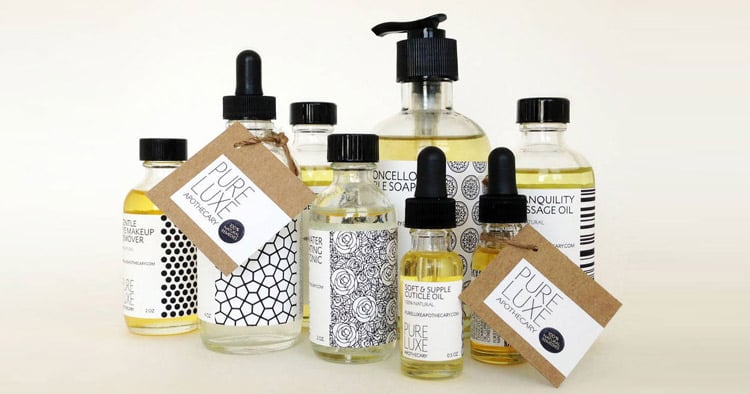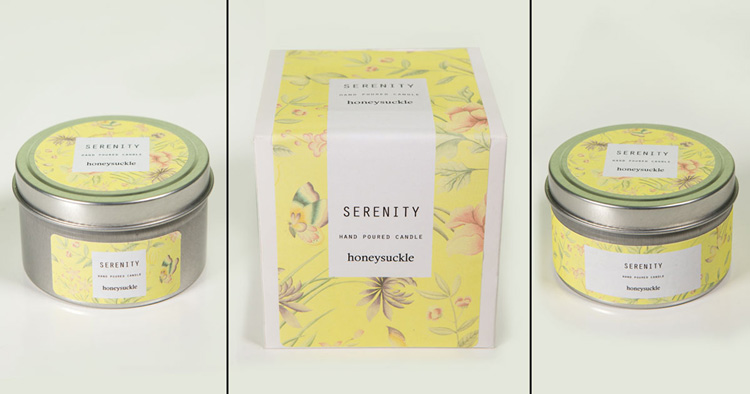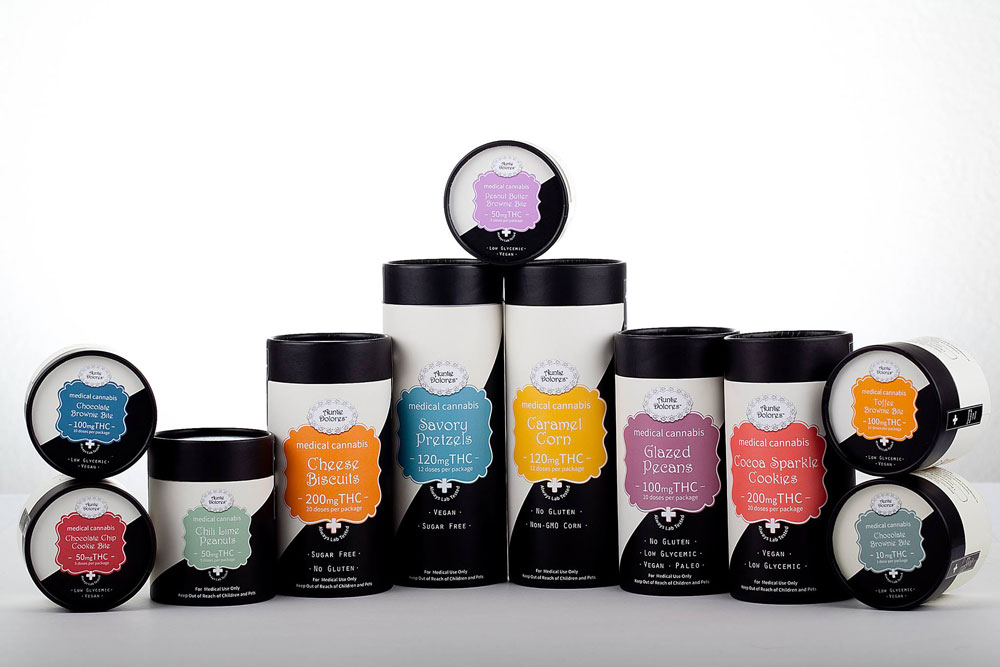Product Packaging: From Concept to Completion

As a consumer, you may have noticed how important packaging can be to making a purchasing decision. In fact, one third of our purchasing decisions are based on the product's packaging alone. According to packaging expert and author Maria Dolores Vidales Giovannetti, packaging is "that which is in direct contact with the product itself or that holds, protects, preserves, identifies, and/or facilitates handling and commercialisation of the product."
By his definition, packaging is much more than just the box a product comes in. After working hard to create a product you're proud of, is your packaging doing everything it can to convince consumers it's a product worth buying? Use the following tips to create labels and packaging that will inspire customers to purchase.
Why Packaging Matters
"Packaging is the single most important marketing tool for a retail product."
~Jenn David Connolly, Jenn David Design
 Pure Luxe Apothecary's labels tell you exactly what you need to know when looking to purchase its products.
Pure Luxe Apothecary's labels tell you exactly what you need to know when looking to purchase its products.
First and foremost, it's important to remember why we buy products in the first place. Every product, food or otherwise, exists to fulfill a need. That need may be hunger, it could be entertainment, and or perhaps it's decor to dress up a room. Customers turn to the packaging for that information, making it of crucial importance.
How you show that your product fulfills that need is where design comes in. The use of colours, images, and graphics plays a key role in subconscious purchasing decisions. We weigh the design on an emotional level, assessing if it aligns with our personality, represents tenets we value, and justifies its price point. And that's how we narrow down our options.
How To Pick Your Packaging
"Take time to consider the experience of receiving and opening your package and be sure it reflects your brand image. This experience can be instrumental to winning repeat customers."
Rachel Stephens, Totally Promotional
 Serenity Candles showcases how you can package the same container three different ways, creating three unique looks.
Serenity Candles showcases how you can package the same container three different ways, creating three unique looks.
How do you know how much packaging your product needs? Should it stand alone or be placed in a box or other type of container? Here are a few things to think about:
- Is there an industry standard? For example, shampoo bottles often don't come in secondary boxes but tubes of toothpaste do. Why is that, and should you conform or break the mold?
Which is more visually important, the packaging or the product? Before you answer that question, bear in mind the results of a University of Clemson study on packaging. They found that customers prefer to see as much of the product as possible before purchasing.
If looks alone can sell your product, show it off with as little packaging as possible, or packaging that emphasizes its best qualities. If you've gone with a container for your product that's unique, don't hide it behind a box either.
On the other hand, if your container or product isn't built for that "wow-factor," let a label or outer packaging win over customers on the shelf.
- Are you being wasteful? Consumers today are very conscious of overpackaging. If you're promoting a green product, does your packaging corroborate that?
- Is there enough room on your product to get across all the necessary information? You want to have enough real estate to hold all your content well without it being overwhelming. We see this frequently with over-the-counter medicines, they often come in boxes because the bottle label can't hold the same amount of content.
What To Consider For The Design
"A great label can turn a plain box into an ambassador for your brand."
~David Mack, SketchDeck
 Auntie Dolores transforms traditional cardboard tube packaging with creative and colourful labels.
Auntie Dolores transforms traditional cardboard tube packaging with creative and colourful labels.
As consumers, we consciously and subconsciously rank brands and products against each other. Where they fall in each person's mind is that product's position. Brands want their products to rank at the top of that ladder and use packaging to sway opinions. Ask yourself these questions when preparing your design to help ensure your product's design success.
- Is there a balance of design and content? There's a fine line between including too much of your brand's character and not enough information and including too little character and too much information. You want to use enough of each to grab their attention and hold their interest.
- What do you want the first impression of your product to be? The same principles about human introductions apply – customer perceptions are formed almost instantaneously and, often times, can be carried over to when they use your product, affecting customer satisfaction.
- Does your product or brand have history? People love to know backstories; who made it, what it's made from, where it was made, when it was made, why you created it, and how. You can incorporate this into the design and content.
- If you have multiple layers of packaging, is it purely for initial impact or does it have a use after purchase? If it has a removable component, make sure the information it includes isn't pertinent in the event it gets discarded.
Creating a positive customer perception of your product begins with its packaging. Using these questions, you're on the right path to creating a stellar point-of-sale product. Next, learn how to keep packaging costs low.
Browse our materials or reach out to our customer service team at 0203 051 9664 when you're ready to move into the execution phase.
Article written with expertise from Jenn David Connolly of Jenn David Design, Rachel Stephens of Totally Promotional, Jordan McCreery of Ingrained Media, and David Mack of SketchDeck.


